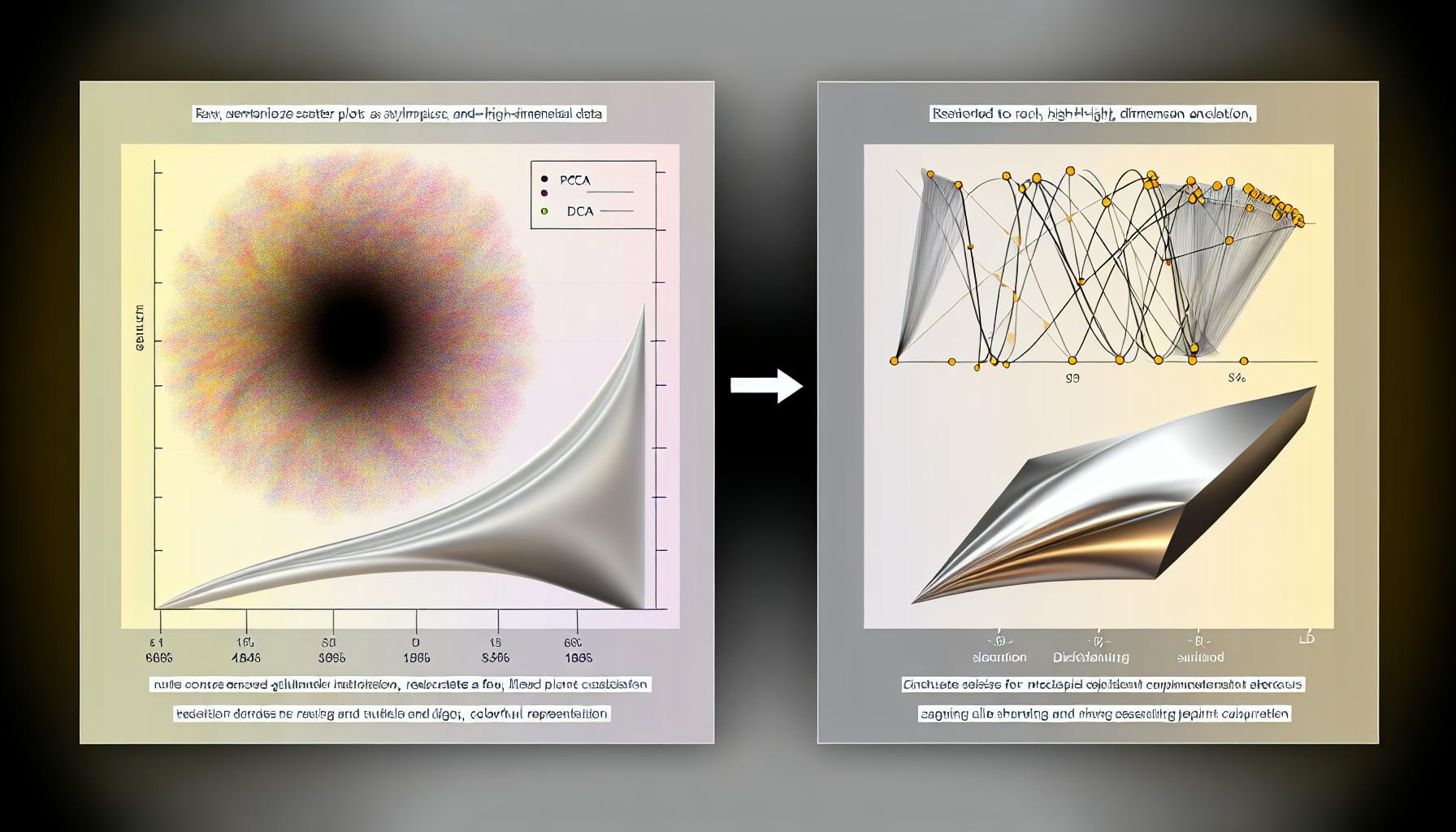With the rise of big data and AI, most would agree that machine learning has become an indispensable tool for extracting value from data.
In this post, you'll discover a key differentiation in machine learning algorithms - supervised vs. unsupervised learning - and see clearly how each is uniquely suited for certain real-world applications in data science.
You'll tour the landscape of supervised and unsupervised learning, from fraud detection to predictive maintenance, understanding exactly how these technologies enable transformative insights across industries. Finally, you'll walk away knowing how to implement both supervised and unsupervised learning within your own data science projects.
Introduction to Machine Learning in Data Science
Machine learning is an important field in data science that enables computers to learn from data without being explicitly programmed. It is commonly divided into two main categories - supervised and unsupervised learning.
Supervised learning algorithms build models by learning from labeled training data, while unsupervised learning algorithms draw inferences from datasets consisting of input data without labeled responses.
In this article, we will compare supervised and unsupervised learning, discussing their applications in data science along with examples. Understanding the difference between the two is key for data scientists to select the right approach for their machine learning projects.
Understanding Supervised Learning Algorithms
Supervised learning is the machine learning task of learning a function that maps an input to an output from example input-output pairs. It infers a function from labeled training data consisting of training examples.
Some common types of supervised learning algorithms include:
- Linear regression for predicting continuous values
- Logistic regression for predicting discrete values
- Decision trees for making predictions based on decision rules
- Random forests for creating ensembles of decision trees
- Neural networks for modeling complex patterns in data
For example, a supervised learning algorithm can be trained using historical sales data paired with actual sales numbers to create a model for predicting future sales. The training process continues until the model achieves an acceptable level of accuracy on the training data.
Key benefits of supervised learning include high accuracy and specificity as the models are tailored to particular prediction tasks. However, a challenge can be overfitting on the training data.
Exploring Types of Unsupervised Learning
In contrast, unsupervised learning algorithms are used when the information used to train is neither classified nor labeled. These algorithms draw inferences from datasets consisting of input data without labeled responses.
Some common unsupervised learning techniques include:
- Clustering algorithms like k-means which group data points based on similarity
- Anomaly detection algorithms which identify unusual data points
- Association rule learning to uncover relationships between variables
- Dimensionality reduction methods like PCA
For example, a clustering algorithm can segment customers into groups based on common characteristics to develop targeted marketing campaigns.
Key benefits of unsupervised learning include discovering hidden patterns and creating new features from data. However, performance accuracy can be lower compared to supervised learning.
Understanding the core differences between supervised and unsupervised learning along with their applications empowers data scientists to effectively leverage both approaches.
Delineating the Difference Between Supervised and Unsupervised Learning
Supervised and unsupervised learning are two major categories of machine learning algorithms. While both can provide valuable insights, understanding their key differences allows data scientists to select the best approach for their goals.
The Role of Data Labeling in Supervised Learning
Supervised learning algorithms train models using labeled data, meaning input data is paired with desired outputs. For example, an image dataset could have labels denoting whether photos contain a dog or cat. This labeled data allows the model to learn the mapping between inputs and outputs to make predictions on new unlabeled data. Supervised learning is commonly used for classification and regression tasks.
Outcome Goals: Classification and Pattern Discovery
Since supervised learning uses labeled data, the models explicitly try to predict predetermined outcomes. In contrast, unsupervised learning analyzes only inputs, without labels, seeking to find patterns and structure in the data itself. It is commonly used for clustering, dimensionality reduction, and association rule learning.
Use Cases: Supervised vs Unsupervised Learning Applications
Supervised learning shines for prediction tasks where labeled data is available, like spam filtering, customer churn prediction, or medical diagnosis. Unsupervised methods are extremely useful for segmenting customers, understanding product associations, identifying topics in text, and more exploratory objectives.
In summary, supervised learning predicts outcomes while unsupervised learning discovers insights. Properly matching the approach to the use case is key for extracting maximum value from data. Understanding these core differences allows data scientists to build more accurate, impactful models.
sbb-itb-ceaa4ed
Real-World Applications of Supervised and Unsupervised Learning in Data Science
Fraud Detection Using Supervised Learning
Supervised learning algorithms can be highly effective for detecting fraudulent patterns in data. By training classification models on labeled datasets of fraudulent and legitimate transactions, the models can learn to recognize the subtle signals of fraud.
For example, banks train and deploy supervised learning models to analyze each credit card transaction and flag potentially fraudulent purchases. The models consider hundreds of features related to the transaction, cardholder, merchant, etc. to determine a fraud risk score. Models are retrained regularly on new transactions to stay on top of emerging fraudulent patterns.
Key benefits of using supervised learning for fraud detection include:
- High accuracy from training on real data with known outcomes
- Ability to uncover complex relationships and interactions indicative of fraud
- Continuous retraining as new data comes in to detect evolving attack types
- Flexible incorporation of diverse features related to users, transactions, locations, etc.
With fine-tuning, supervised learning allows financial institutions to achieve 95%+ accuracy in identifying fraud, while minimizing false positives that inconvenience customers.
Customer Segmentation Through Unsupervised Learning
Unsupervised learning is hugely valuable for grouping customers based on their behaviors and attributes. By finding natural clusters in purchasing data, marketers can tailor promotions, pricing, and messaging to best resonate with each segment.
For example, an online retailer can input data on customers' browsing history, items purchased, order frequency, etc. into an unsupervised learning algorithm like k-means clustering. It will output distinct groups of customers, like big spenders, discount shoppers, impulse shoppers, etc.
Key advantages of using unsupervised learning for customer segmentation include:
- Discovers hidden insights without needing predefined labels
- Handles highly complex and multivariate data
- Identifies behavioral patterns to optimize cross-selling and upselling
- Groups similar customers to enable targeted marketing
With customer segments identified, the retailer can launch segment-specific email campaigns promoting items commonly purchased by that group. This allows relevant targeting without needing to manually define complex rules.
Predictive Maintenance: A Supervised Learning Example
Supervised learning excels at forecasting equipment failures from sensor data so issues can be addressed before causing downtime. By training models on past examples of healthy and failing equipment, they learn which operating conditions tend to precede a breakdown.
For instance, an oil rig uses vibration, temperature, and pressure sensors to monitor critical pumping equipment. Data is fed into a supervised classification algorithm, labeling each 10-minute window as likely to fail within 24 hours or not. This allows engineers to proactively inspect flagged components.
Key strengths of supervised learning-based predictive maintenance include:
- Early identification of failures before causing operational disruptions
- Continually improving accuracy from ongoing data collection
- Handling many sensor inputs simultaneously
- Adaptability to new equipment and failure modes
- Intuitive outputs for maintenance crews to take action
With sensors proliferating across worksites, supervised learning delivers immense value by converting raw data into prescriptive insights to minimize downtime.
Implementing Supervised and Unsupervised Learning in AI and Data Mining
Supervised and unsupervised learning are two major types of machine learning algorithms used in data science and AI applications. Properly implementing them requires careful planning and execution.
Ensuring Data Quality for Machine Learning Algorithms
Clean, representative data is crucial for machine learning models to work effectively. Before applying supervised or unsupervised techniques, data scientists should:
- Carefully inspect the data for errors, missing values, outliers, etc. These can skew results.
- Consider whether the available data sufficiently represents the real-world use case. Additional data collection may be needed.
- Preprocess data as needed via cleaning, transformations, augmentations. This improves quality.
- Split data into training and test sets. This enables proper model evaluation.
Testing and Validation of Learning Models
Rigorously testing models on holdout test data is key to understanding true performance. For both supervised and unsupervised approaches, data teams should:
- Evaluate models on relevant metrics like accuracy, AUC, etc.
- Perform cross-validation with multiple train-test splits.
- Test models on fresh real-world data over time. Performance can degrade if new data is different.
- Compare multiple models side-by-side to select the best performer.
Monitoring and Maintenance of Learning Systems
Launching an AI system is just the beginning. To keep machine learning models working effectively, organizations need to:
- Continuously monitor model performance on live data via accuracy metrics and error rates.
- Regularly update models with new training data to account for concept drift.
- Re-evaluate choices of algorithms if better options emerge. Ensemble methods often improve over time.
- Document model versions and changes to enable accountability and reproducibility.
With the right data quality, testing, and maintenance practices, companies can reliably unlock value from both supervised and unsupervised learning techniques. The key is taking a lifecycle view.
Conclusion: Harnessing the Power of Supervised and Unsupervised Learning in Data Science
Supervised and unsupervised learning offer complementary strengths for tackling different data science problems. Key differences include:
-
Supervised learning algorithms are trained on labeled data to predict outcomes or classify new data based on patterns learned from the training data. Common use cases include fraud detection, sentiment analysis, image recognition, and predictive modeling.
-
Unsupervised learning algorithms analyze unlabeled data to find hidden patterns, group data into clusters, or reduce dimensions. Applications include customer segmentation, anomaly detection, association rule learning, and dimensionality reduction.
To determine which technique to apply for a given problem:
-
If you have a set of labeled data, use supervised learning to train a model to predict labels or outcomes for new unseen data.
-
If you only have unlabeled data, use unsupervised learning to find natural groupings and patterns in the data.
Best practices for success include:
-
Carefully evaluating your available data and end goals to select the right algorithms.
-
Preprocessing data to handle missing values and outliers.
-
Tuning model hyperparameters for optimal performance.
-
Retraining models periodically as new labeled data becomes available.
Leveraging both supervised and unsupervised learning provides a comprehensive toolkit for uncovering insights from data. A thoughtful approach pays dividends across predictive modeling, pattern detection, classification, and other core data science tasks.


